Murphy's Law is a saying that says "What can go wrong, will go wrong." That was probably the theme for today. Today's plan was to test out all the equipment on the water, to give us all practice using the equipment and learning how to collect the data we will need to gather over the next few weeks.
We began the day getting the equipment moved down from our lab space to the dock where the boats are tied up. This was pretty amusing, as we have some really heavy equipment and we decided to get it down the ¼ mile or so by bicycle.
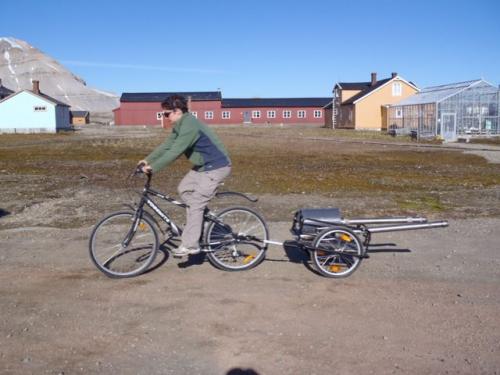
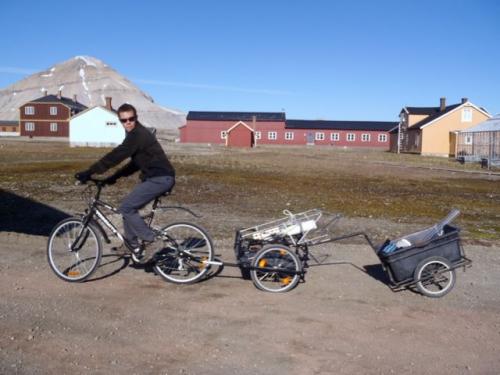
Murphy's Law
We loaded it all up onto the boats, and right away things started to go wrong. Ross and George were working on setting up the "echo sounder" which is a device used to measure the depth of the sea floor. We are hoping to make some good "bathymetric maps", or maps of the sea floor, in front of the glaciers – this will help us understand how much sediment they are depositing which can tell us a lot about how the glaciers are responding to a warming climate.
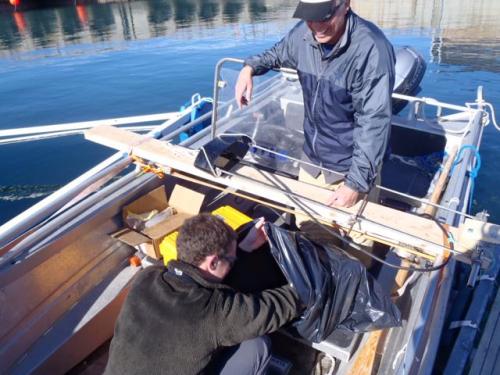
Unfortunately the connectors between the echo sounder device and its cable had become damaged, so George and Ross had to spend the day troubleshooting. This is a very important measurement, so it was certainly worth their time trying to get this up and running. Hopefully that system will be operational soon.
How to Deal with a Bad Wrap
The rest of us went out in the water off Ny Ålesund to try taking samples using four different devices. It seemed that something seemed to get in the way of each! First we set up the CTDA research tool that is submerged in the water to measure conductivity (salinity), temperature, and depth. (Conductivity, Temperature and Depth) system – which, by the way, is a really cool device. It will allow you to get a really good idea of the properties of water at specific depths.
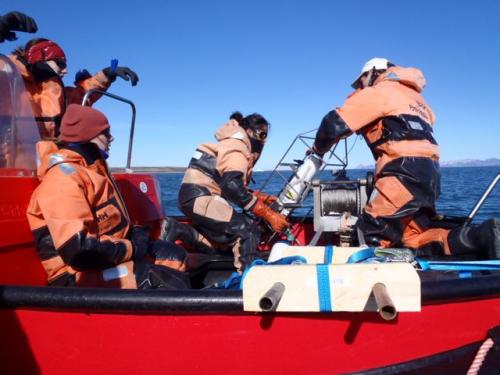
Soon we discovered that the cable on one of the winch mechanisms had been improperly wound. We were able to use the winch on the other boat, but then we came back to shore to get the cable wrapped properly. We literally had to unwind several hundred meters of cable and wind it properly back onto the winch.
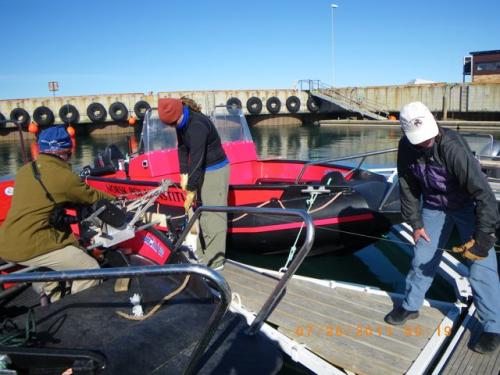
Kelp, but no Cores
After lunch we went back out with our freshly wound cable and set out in earnest to take core samples. There are two types of core samples we hope to take – gravity cores and box cores. Gravity cores involve essentially dropping a hollow tube with a heavy weight on top. We drop this device into the mud below and, hopefully, pull up a sample of mud. This mud sample, about 3 feet long, can be used to study the sediments left by the glaciers. A box core involves dropping a metal box onto the sea floor. Two scoopers are then let loose by means of a stiff spring mechanism. The scoopers close up the bottom of the box and then you can pull up a sample of the surface mud.
So once again, we had difficulty with doing this sampling. We decided to stay close to town to make the whole process easier, but every place we went we seemed to be on a rocky surface (where you can't collect mud) and we were picking up kelp, not mud. To make matters worse, the mechanism on the winch that measures the length of cable let out was not working properly! That's something else that will need to be fixed.
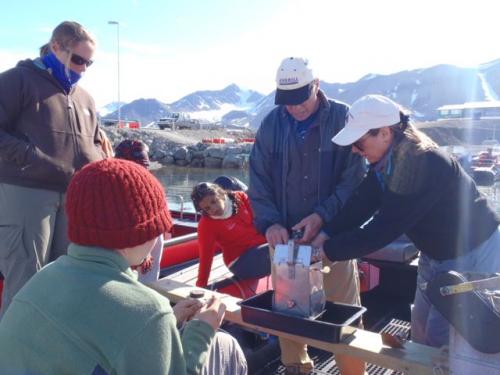
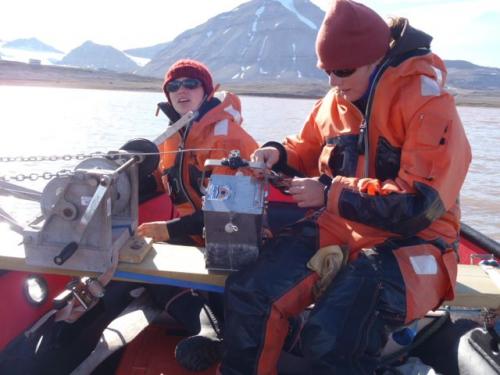
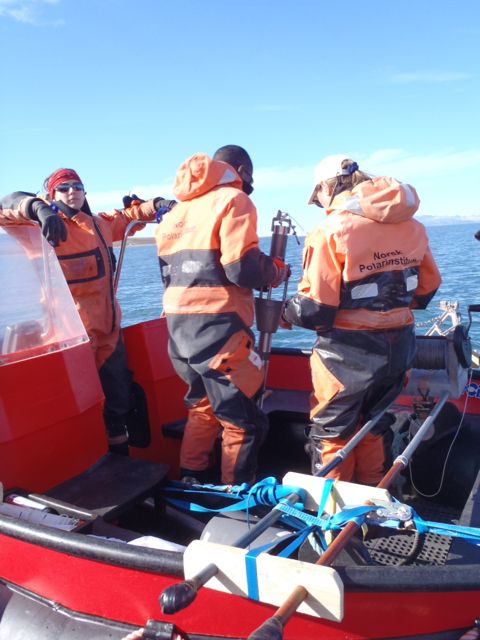
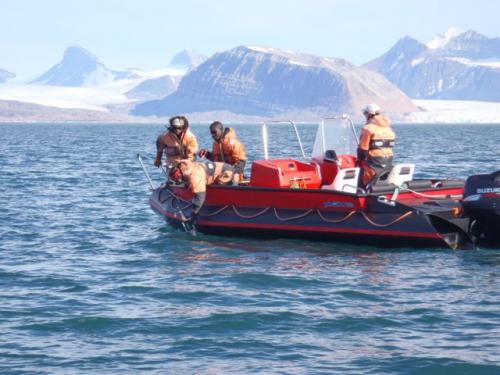
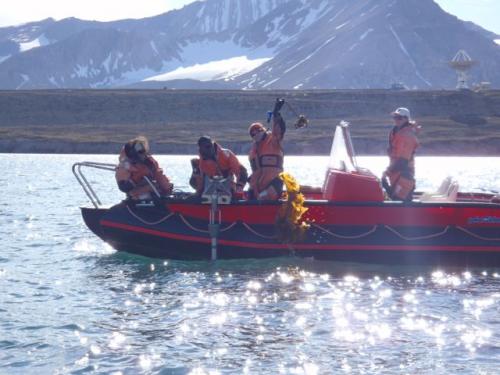
Putting Things into Perspective
So today was a day filled with glitches. While this can be frustrating, I found it so interesting to remember that this is often what happens when doing complex science investigations like the one we are embarking on. You come up with your ideal plan, and you try to anticipate all the things that can go wrong. But inevitably Murphy's Law comes into play – things will go wrong!
Today was also an opportunity to see how well Julie and Ross work under less-than-ideal circumstances. Neither of them ever lost their sense of humor today, and they really seemed to see this as a learning experience for all of us. Their attitude seems to be "what can we learn from what happened here?" They immediately set into trying to solve the problems and to re-evaluate the plans for today. Because of their leadership, we all took today's setbacks in stride.
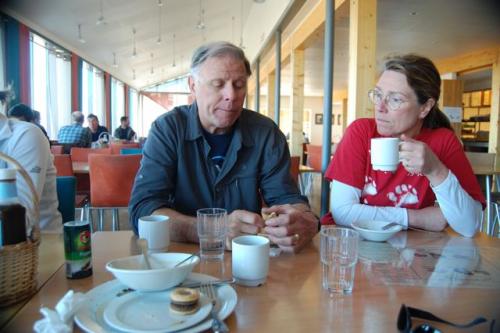
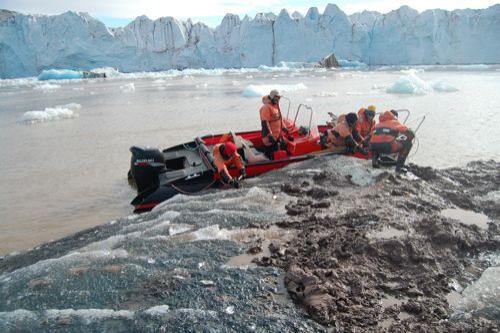
To say the least, things certainly did not go as planned. But I would say it was a very productive day. The students all got a chance to practice using the equipment, even if they weren't able to collect any real data. Most of them don't have much experience on boats, so even just learning how to move around on a boat and to work on a boat involves a whole new set of skills that they needed to learn and practice. And it's important for us all to see that science often involves setbacks and roadblocks that must be dealt with creatively. As for me, I also got a chance to learn how to drive these boats and how to do my best to position the boat over a single position to allow for samples to be collected.
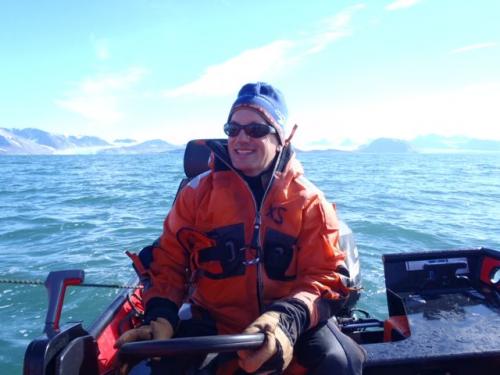
Of course, it's hard to get too frustrated when we just had to look up and see the most beautiful scenery in the world! Today was again a gorgeous day. It was much windier than yesterday, which made it feel cooler, but with complete sunshine all day.
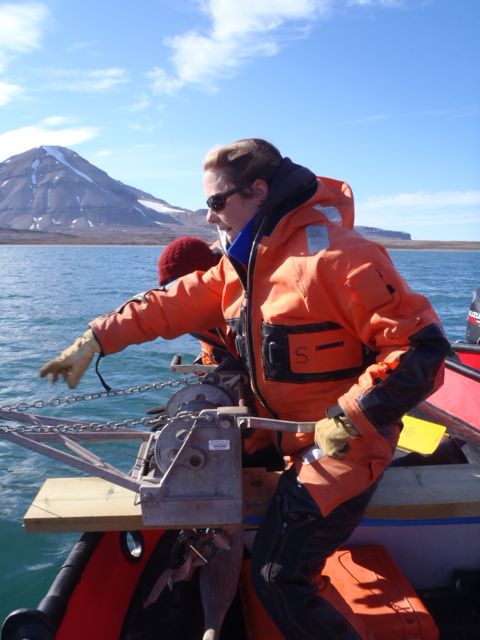
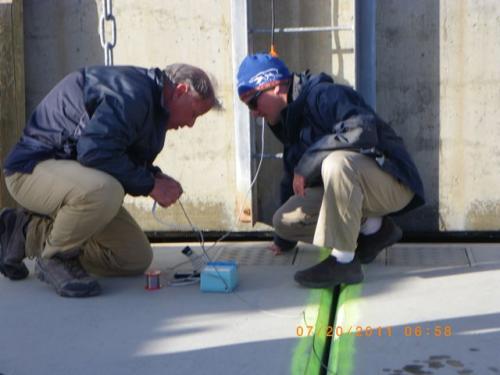


Comments